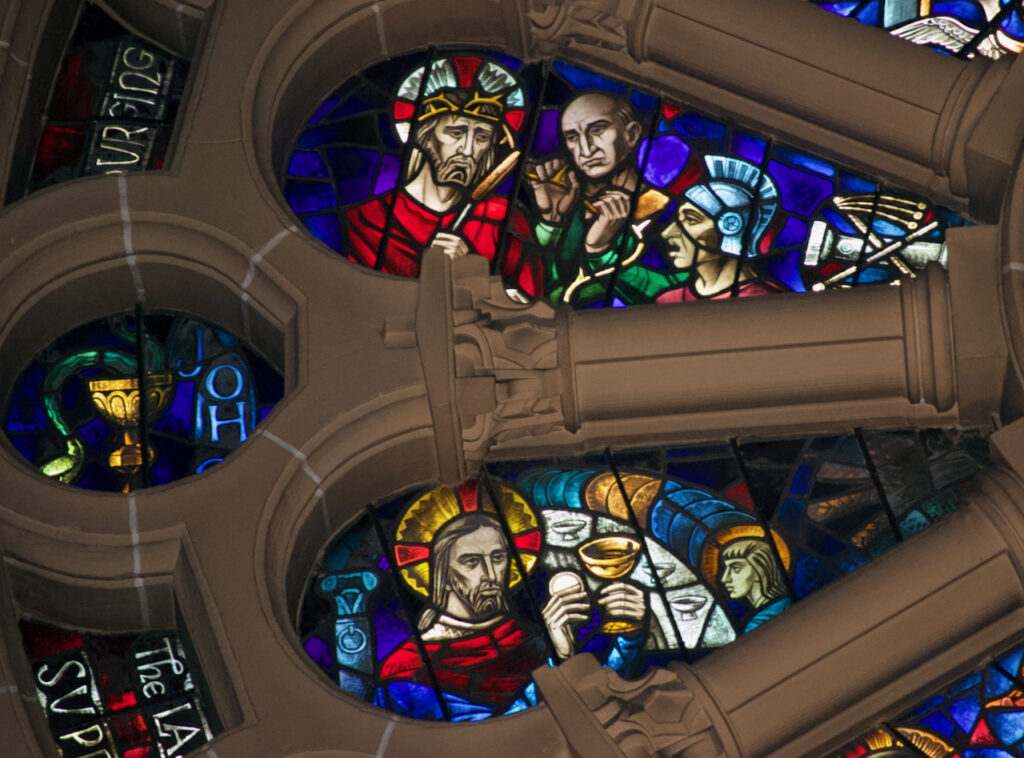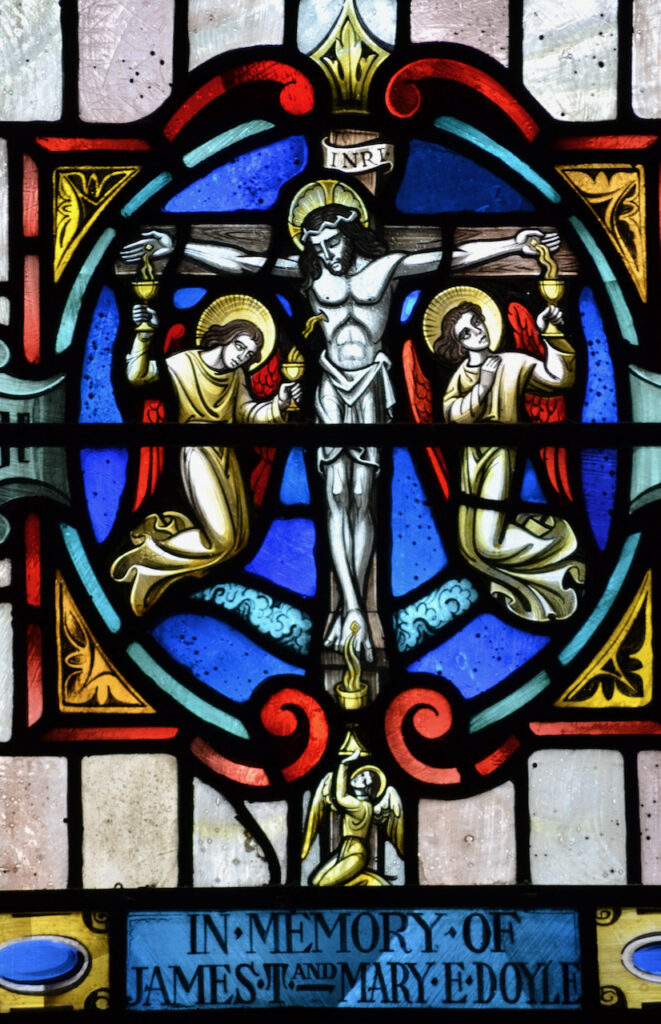
The events of Holy Week are in the God the Son rose window over the choir loft. The lower pane illustrates the Last Supper, the Passover meal that Jesus celebrated with his apostles. Jesus is holding the bread and a chalice of wine. He is dressed in blue, a symbol of His divinity, and red, a symbol of His Passion and death which are to come. The gold in His halo also represents His divinity and the divine light that shines through Him. Jesus is standing before a table, at which the apostles are seated. The face of one, perhaps John, for he looks young, is visible and the rest are suggested by the row of halos. The table is set with bowls for the Passover meal.
While they were eating, Jesus took bread, said the blessing, broke it, and giving it to his disciples said, “Take and eat; this is my body.” Then he took a cup, gave thanks, and gave it to them, saying, “Drink from it , all of you, for this is my blood of the covenant, which will be shed on behalf of many for the forgiveness of sins.” (Matt: 26: 26-28)
In the inner corner of the pane are grapes and a sheaf of wheat, symbols of the bread and wine which Jesus changed into His Body and Blood. Behind Jesus’ shoulder is a pillar, foreshadowing his scourging and the suffering and death he would undergo.
The upper pane illustrates the scourging and mockery of Jesus before His Crucifixion. He is now dressed in a red garment and His halo is white, a color representing innocence and purity. A soldier and another man, perhaps of the priestly class of the Jewish people, are also in the pane, for Jesus was condemned by both the religious leaders and the Roman government. He has been scourged by the soldiers, as indicated by the pillar and the whip in the corner of the pane. The other man holds a strand of thorns. On Jesus’ head is the crown of thorns and in His hand is a reed, a mockery of a scepter. Pilate had asked Jesus, “… ‘are you the king of the Jews?’ Jesus said, ‘You say so.’” (Matt 27:11) They are mocking Jesus’ divine kingship.

In the window next to the Sacred Heart altar is an image of the Crucifixion that helps us reflect on the inseparable connection between the Holy Eucharist, instituted by Christ at the Last Supper, and His death on the cross. On the cross is His body and angels hold chalices, into which flows His sacred blood, poured out for the forgiveness of our sins. At Mass we hear the words that Jesus spoke at the Last Supper and we believe that “the sacrifice of Christ and the sacrifice of the Eucharist are one single sacrifice.” (CCC 1367) When we receive Holy Communion, we receive the sacred Body and Blood of our Savior, through which our sins are forgiven.
During these holy days, let us reflect on the love of Jesus for us, that He would offer himself as a sacrifice for our sins. Let us pray that we would more fully turn away from sin in our own lives. Let us pray for peace in the world and an end to the wars which destroy humanity. And let us pray to more fully appreciate the gift of God to us in the Sacrament of the Eucharist.
Catholic Church. (1994). Catechism of the Catholic Church. Vatican City: Libreria Editrice Vaticana.